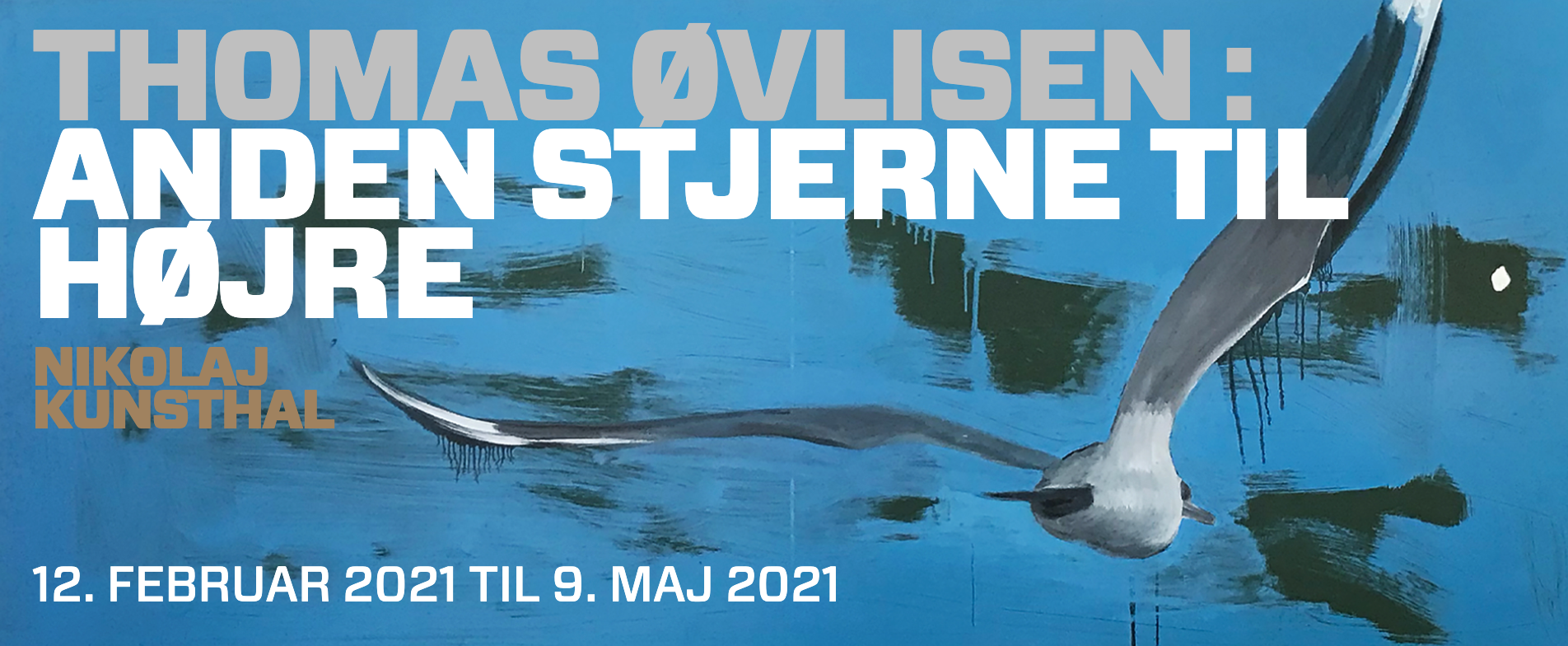Thomas Øvlisen
We recommend the latest version of Safari, Firefox, Chrome, or Microsoft Edge.
Thomas Øvlisen

“Anden stjerne til højre” is Thomas Øvlisen’s solo exhibition at the Nikolaj Kunsthal in Copenhagen, Denmark on view through May 9.
This edition of KLAUSGALLERY.cloud provides a up-close look at the show and Øvlisen’s practice.
Øvlisen has installed a series of paintings, built concrete walls, and spread pink sand in the upper gallery of the Kunsthal. His paintings of seagulls in flight on basketball backboards hang projecting forward from each window, while two handball court walls divide the space and provide a playground atmosphere to the work. The pink sand is evenly distributed on the floor and reflects across the whole gallery, creating a glowing light throughout the hall. The pink ambiance can even be seen at street level emanating from the windows of the Kunsthal tower, one of the most prominent buildings in Copenhagen.
The title of the exhibition translates to “Second star to the right”, referring to the directions to NeverNeverLand in J.M. Barrie’s Peter Pan. NeverNeverLand is a place that exists in the realm of the imagination and is a symbol that captures the point of view of an artist reflecting on his youth from the vantage of middle age, with both an air of nostalgia and an attitude of joyful
contemplation.
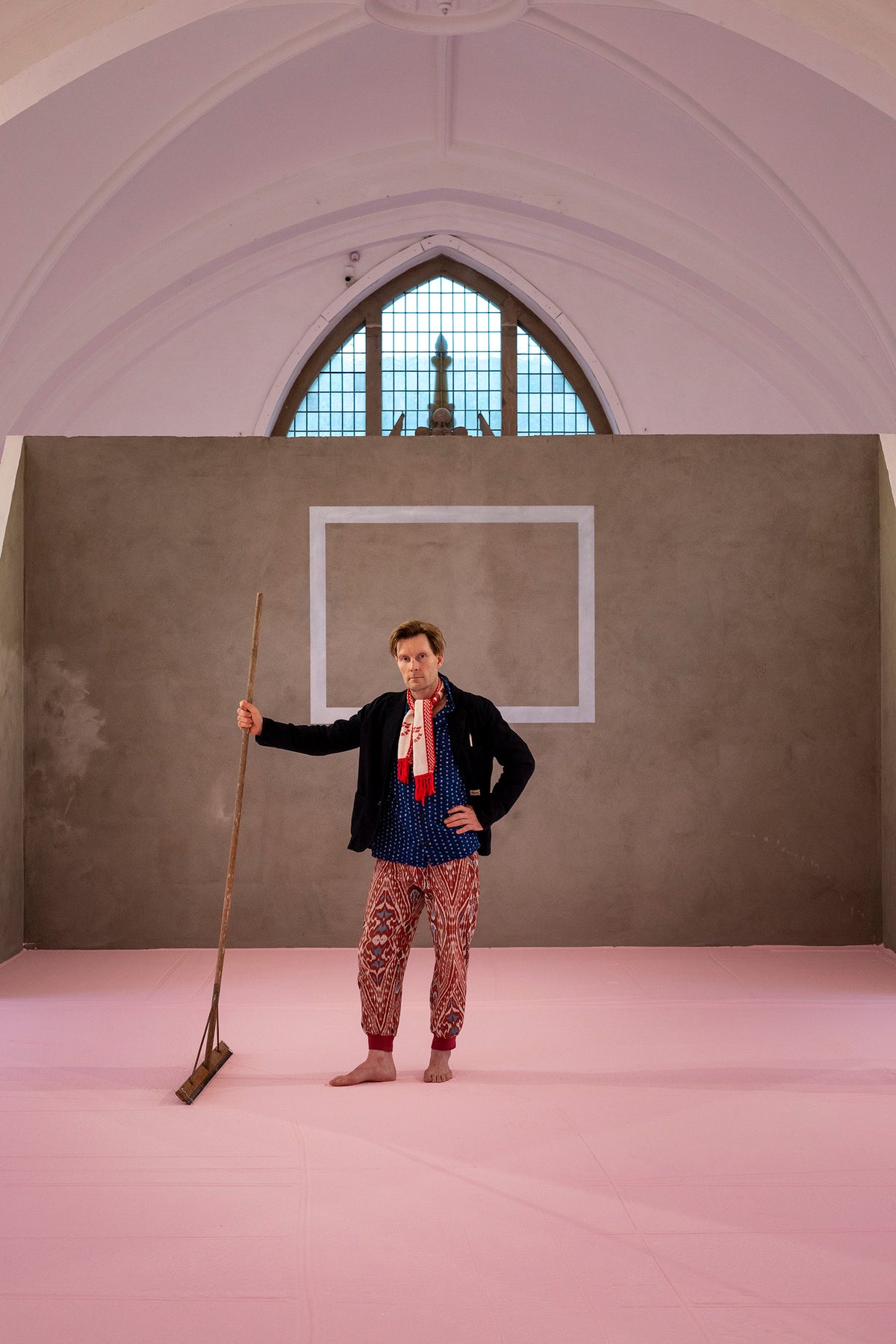
Øvlisen currently resides in Taarbæk, Denmark, a seaside suburb of Copenhagen, near to where he spent his childhood. He has been heavily influenced by the landscapes around the Danish shores, demarcated by horizon lines where the sea meets the sky in the distance. The evidence of time and erosion of water on rock and land has had a recurring visual presence in Øvlisen’s work, from his early abstract paintings to worn and weathered sculptural objects.
As a child of the 1970s and 80s, Øvlisen found his place in sports like surfing, skateboarding, and basketball, and inspiration in elements of popular culture reflective of the era like graffiti and early hip-hop. His work ties together broader themes of global media culture with an approach that centers a mindset of wonder at the natural world.

As Denmark is surrounded by water, seagulls are a ubiquitous presence. Øvlisen’s first strong memories of a seagull motif are located around the output of Danish plate manufacturer Bing and Grøhndal. The company’s Seagull dinnerware series was one of the best selling household goods in 1950s Denmark, and most Danes in the second half of the twentieth century would have been exposed to them. Øvlisen, too, has strong memories of the iconic seagull on his dinnerware at his grandparents’ house. He adopts the motif in his new paintings, repeatedly painting the shorebird imagery like a personal tag onto basketball court backboards, another ubiquitous symbol of his childhood.
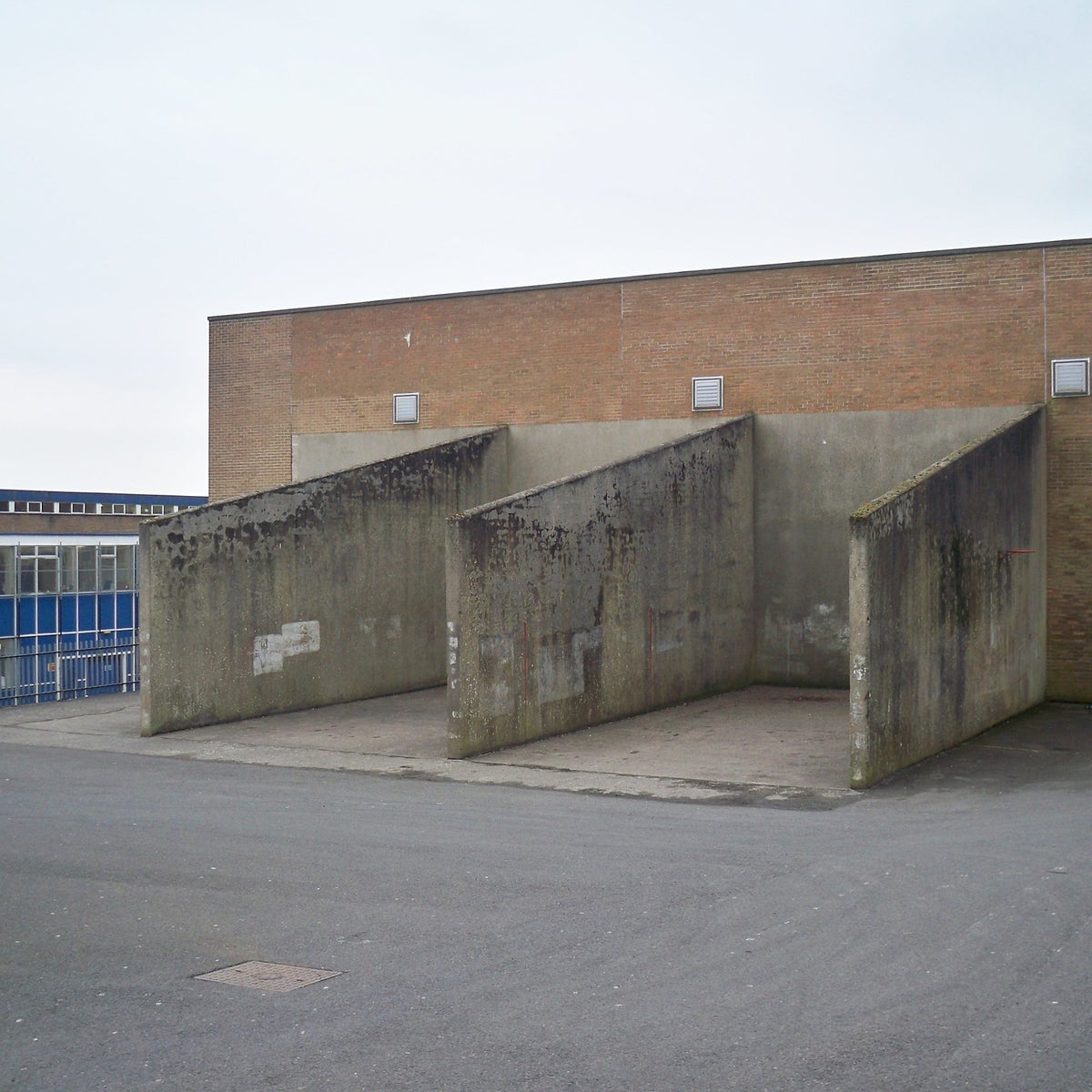
Øvlisen grew up looking at local handball courts, public places where people would gather for sport, –but, also, where teenagers would hang out after hours for fun and youthful indiscretions.
The rough, concrete architecture of the walls belie a sense of optimism and play imbued in the artist’s childhood memories of their environs.
The concrete also provided a “blank canvas” for graffiti. Tags and messages asserted the presence and communications of those who spent time between the walls of the courts.
While standard handball walls are 40 x 40 feet, Øvlisen’s are 10 feet high (like the rim of a basket hoop), and have the same size ratio as the paintings, making them 18 feet wide. The painted square on the wall is also the same size as squares behind the seagulls in the paintings, framing the spectator in the space between Øvlisen’s constructed walls and the hanging pictorial works.
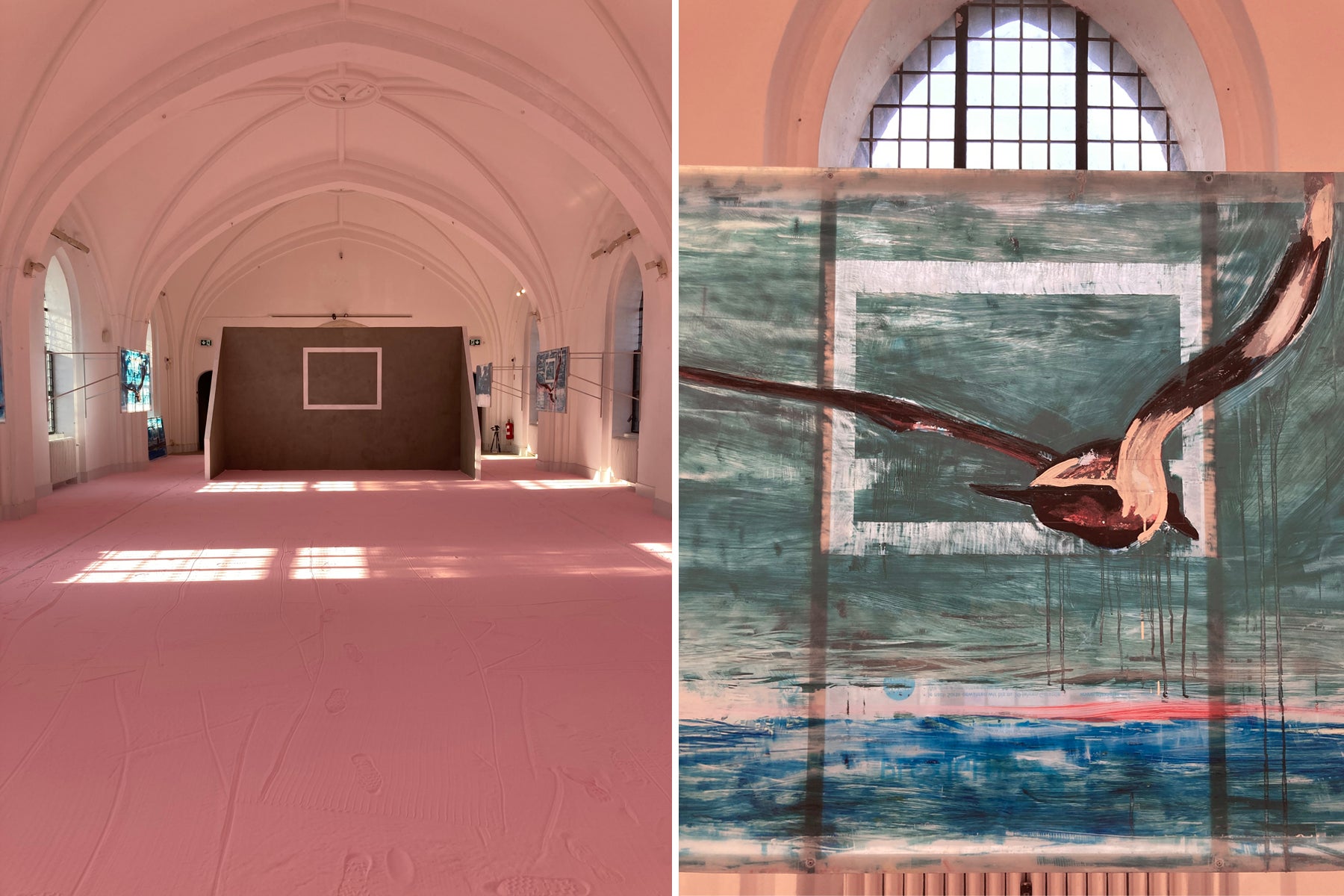
At the Kunsthal, Øvlisen encourages visitors to carve into the walls, leaving a token of their presence at the show. The accumulations of marks mimic elements of public architecture susceptible to graffiti, weathering, and time.
As each visitor walks through the exhibition, too, they leave a trail of footprints in the pink sand, capturing a few moments in an ephemeral and shifting medium.
Creating a direct link between the artist’s studio and the exhibition, Øvlisen has installed elements of his workspace in the museum and is making artwork on site during the course of the show.
Members of the public can make appointments to visit and engage with Øvlisen and his working process. This allows for more intimate interactions in a moment when interpersonal moments are few and far between.
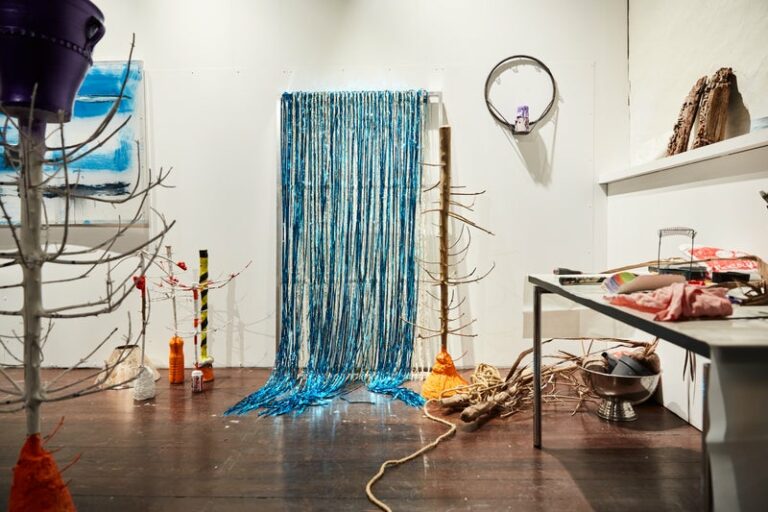
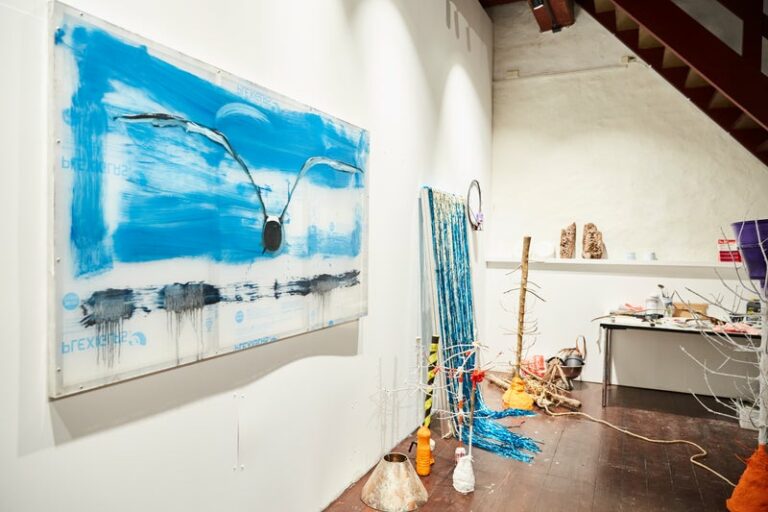
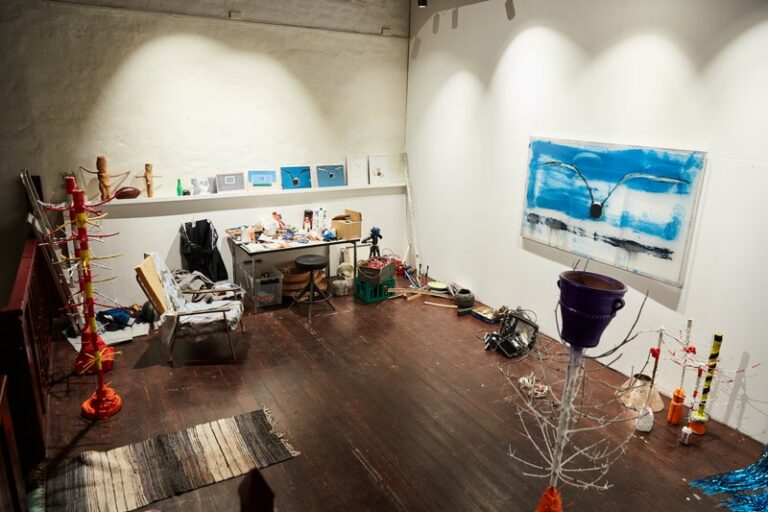
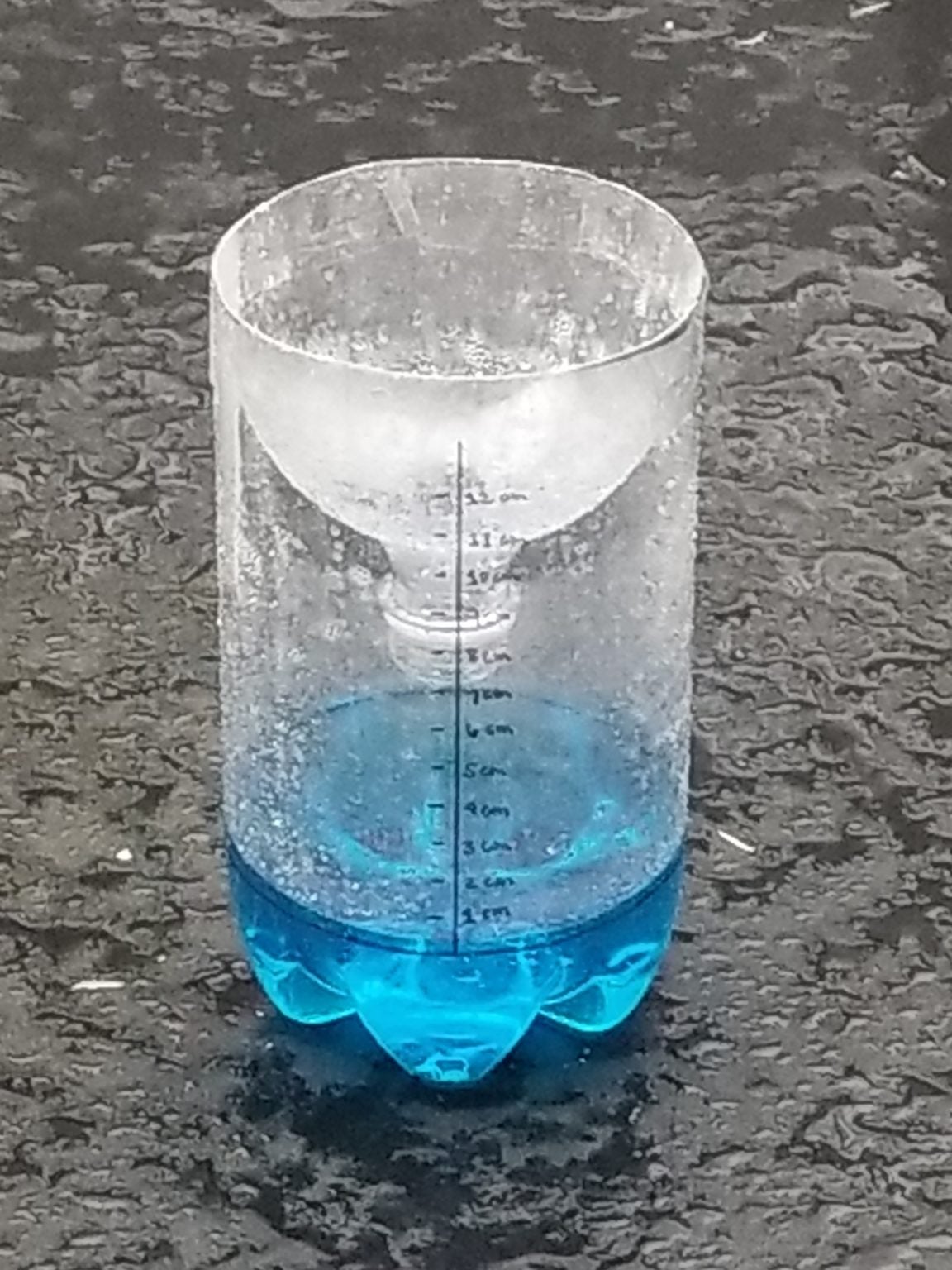
Another strong visual memory of Øvlisen’s childhood is that of the DIY rain gauges that many Danish homes (including the artist’s grandparents’) put to use outdoors. This home science tool sparked an early interest in the environment for many of Øvlisen’s generation.
In 2016, Øvlisen started making sculptures out of detritus in his studio, taping together discarded bottles into vertical stacks with packing tape. These forms mimicked the style of rain gauges put together from cut soda bottles, a process of recycling, retooling, and studying the natural world.
In an act of respect and commemoration, Øvlisen had these forms electro-silverplated, transforming them into trophy-like sculptures reminiscent of the rain gauges that were so formative in his youth.
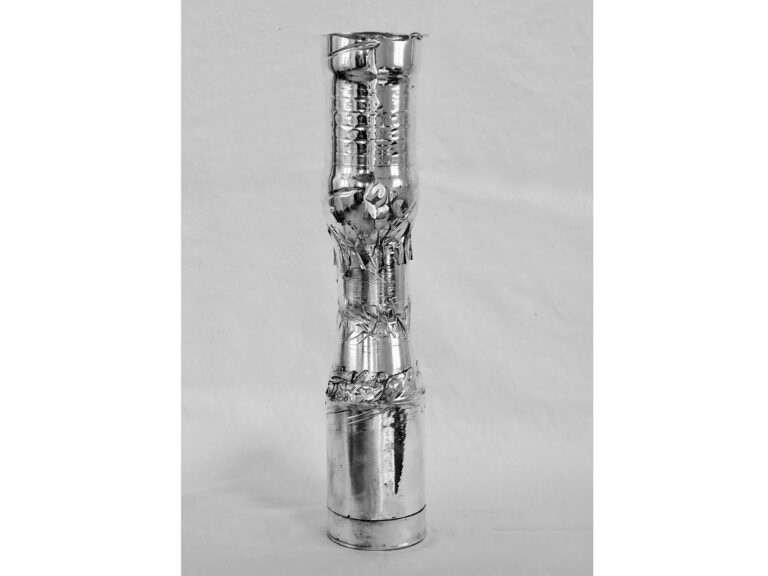
Wednesday May 30th, 2018, 2018
silver-plated single use plastics and other disposables
20 ⅛ inches x ø 3 ⅞ inches (51 cm x ø 10 cm)
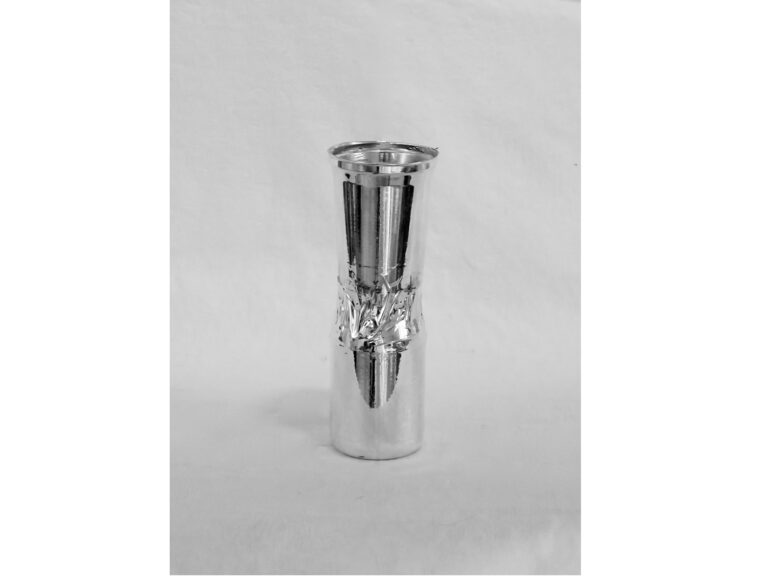
Friday June 22nd, 2018, 2018
silver plated single use plastics and other disposables
9 ⅝ inches x ø 3 ½ inches (24.5 cm x ø 9 cm)
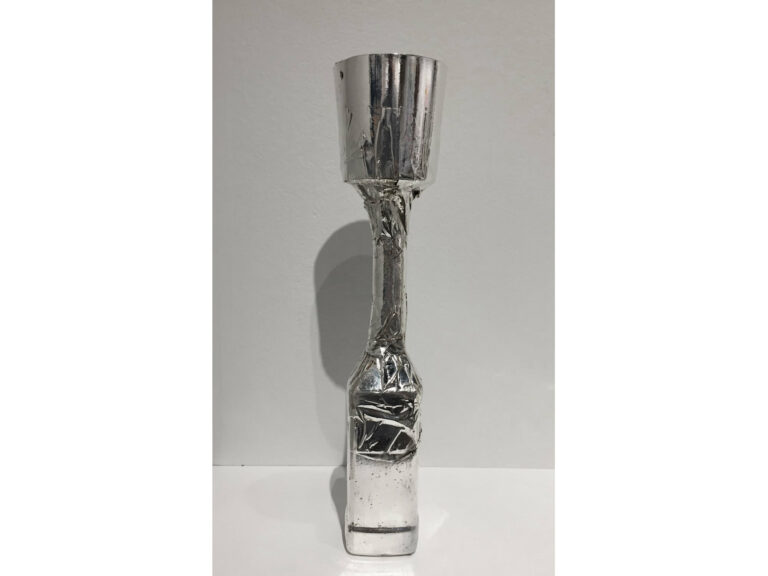
Sunday August 12th, 2018, 2018
silver plated single use plastics and other disposables
15 ½ inches x ø 3 ¼ inches (39.37 cm x ø 8.26 cm)
